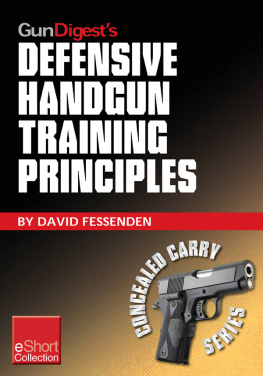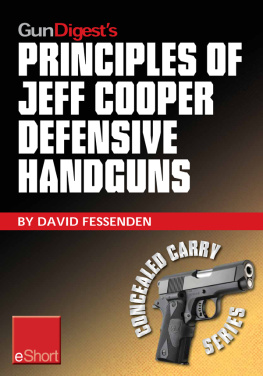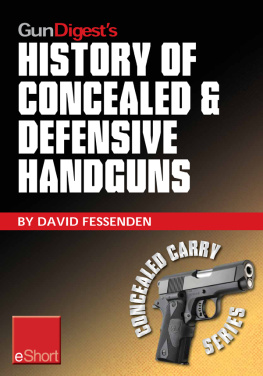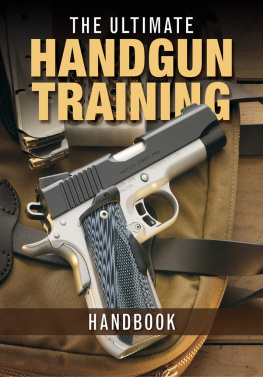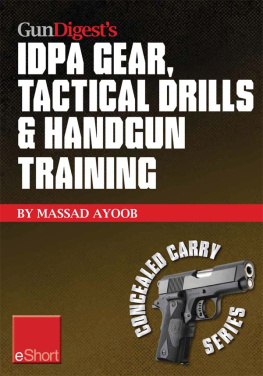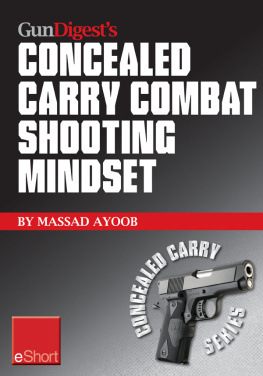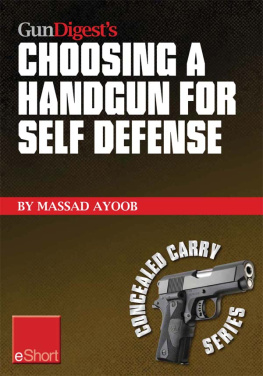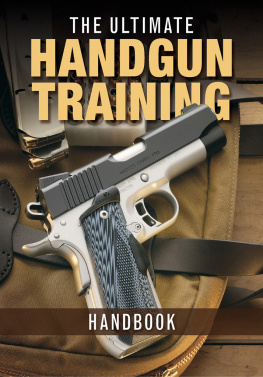The essence of defensive handgun skills is simply this: you do not have to be a victim!
The Definition of Defensive Handgun Skills
Before we can explore the realm of defensive handgun skills, we need to agree on a definition of what this art form truly is. Bear in mind that we must work within the confines of the legal constraints imposed by many state legislatures.
Most of the 38-odd states that have passed shall-issue concealed carry laws all have varying clauses in each statute. One common thread in each is that you have the right to protect your life and that of your family, and your property, from the threat of serious bodily harm and/or death. Pretty basic stuff, that! Therein lies the essence of our definition: you do not have to be a victim.
My rationale for defensive guncraft goes as follows: you have the right to use a weapon (handgun, long gun or edged weapon) in the lawful protection of your life and that of your family. It may be used as a deterrent or as lethal force, if the assailant launches a lethal and violent attack.
It follows, then, that the definition of defensive handgun skills is simply this: they are the means of using a weapon (hand gun, long gun or edged weapon) in the lawful protection of your life and that of your family. Now this definition has not been pulled from some other publication or authors work. It is mine and comes from my study, research, teaching and thoughts about the various state laws and their application to our Constitution.
Familiarity and proficiency with your chosen weapon are only half the requirement. You must also be aware of, and observe, all applicable laws governing concealed carry in your state.
One note, at this point: several anti-gun states still cling to the silly notion that the potential victim must demonstrate to an attacker that he has retreated to a position of being less of a threat to said attacker. Now this doesnt make a lot of sense. Currently, several states have stricken this clause from their statutes in favor of the potential victim, in the form of what is now being called Stand Your Ground laws. Finally, some of these state legislatures at least get it! Remember that you and you alone are responsible for knowing all applicable laws dealing with personal protection in the state in which you reside.
We know that law enforcement cannot always be there in our time of greatest peril, so we must train to prepare ourselves for this eventuality, should it ever occur. We have to train so as to confine our responses within the legal limits imposed by each individual statute. You see, concealed carry weapon (CCW) laws are all double edged. They provide the law-abiding citizen with the legal tools needed to provide for his or her own protection, but they demand that he or she act with great restraint and stay within this narrow band of responsibility in regard to a criminal who is intent on doing bodily harm.
If the CCW permit holder operates within these limits of force, identifies each level of danger and escalation by his assailant, and applies the appropriate measured response and survives the encounter, then he or she may still have to face the legal system in his or her community in a civil action, as deemed necessary under the law, by the district attorney.
The CCW permit comes with a tremendous and awesome responsibility to react to a threat with a controlled response that is sufficiently measured but also forceful enough to stop the threat. Remember, it is not a license to shoot a bad guy who may only appear to mean you great harm. Identifying that level of the threat is a very important component of your training.
Please note that my definition of defensive guncraft has been carefully formulated to remain within the bounds of most legal terminology and to comply in a generic way with basic CCW statutes.
One last time on our definition of the art of defensive handgun skills: they are the means of using a weapon (hand gun, long gun or edged weapon) in the lawful protection of your life and that of your family. They can be deployed as a deterrent or as lethal force, if the assailant continues a potentially lethal and violent attack.
Now, lets examine all the elements of our defensive handgun skills equation and construct a logical sequence that will afford us a better understanding of this lifesaving and often necessary art.
U.S. Naval Academy, Annapolis, Maryland. Instruction in pistol shooting - 1942
The History of Defensive Guncraft
As most of us know, there have been primitive firearms around since the mid-1300s. Of course, over the centuries, they evolved into the sophisticated weapons systems that we can see on the battlefields and in the hunting, recreational and sporting venues spread around the world. So how did the theory and principles of defensive hand gunning emerge? Good question.
For the answer, we need to look back to World War II and to Lt. Col. Jeff Cooper and the evolution of his fast draw and combat shoots that were staged at Big Bear Lake, California, in the 1950s. Up until that time, handgun shooting consisted of one-handed target shooting with none of the run-and-gun tactics that we see employed today at many of the IPSC and IDPA venues. This concept would change considerably under the guidance of Col. Cooper and his Big Bear contests in the next decade.
In fact, I was serving in the Marine Corps during this time and learned to shoot my 1911A1 duty pistol in this old time Camp Perry-style, one-handed technique with the firing side arm horizontal, locked out, and my body perpendicular to the target. It was often referred to as the dueling position. Coopers Big Bear shoots, by their very nature, were spawning grounds for experimentation and innovation as each competitor worked to get a competitive edge over his fellow competitors.
Initially, they used revolvers as their weapon of choice. Cooper started shooting his 1911A1 Colt Commander, which he had trained with while an officer in the Marine Corps. As his tournament wins grew in number, more and more of his fellow competitors took note and switched to various semiautomatics, mainly 1911-type weapons. Even Thell Reed, the King of the Single Actions, eventually switched to the 1911A1. All experimented with movement and combat (tactical) applications with this handgun.
Developed by the late Jack Weaver, the Weaver Stance is the classic defensive handgunning posture.
One such innovator was L.A. County Sheriffs Deputy Jack Weaver. He worked on several stances and grips over time and figured out that a more stable and aggressive two-handed grip would afford him the accuracy, speed and precision he needed. At first he aimed his weapon at the target in a semi-point-shoot method. To improve his consistency and precision during the shoots, Weaver experimented with raising the weapon higher to eye level for precision-aimed shots. His accuracy and winning percentages improved immediately. Thus was born the Weaver Stance and Grip. (I discuss the Weaver Stance and Grip in great detail later in this book.) It consists of a 30 bladed stance with the firing-side foot pulled back about four to six inches from the firing line and combined with an overlapping two-handed grip.

